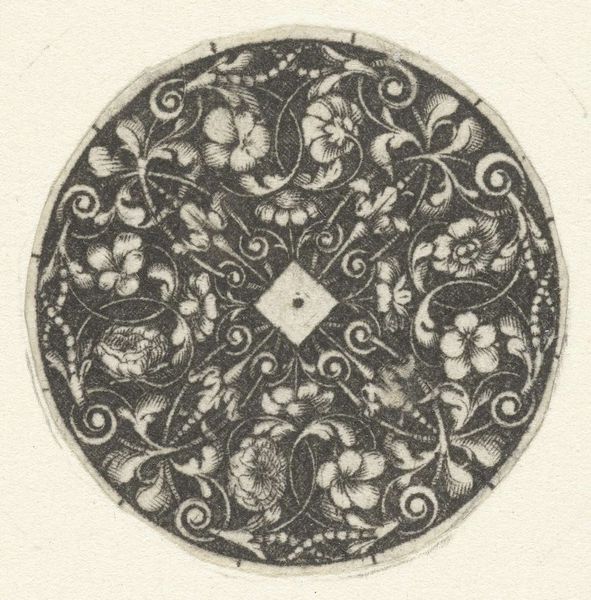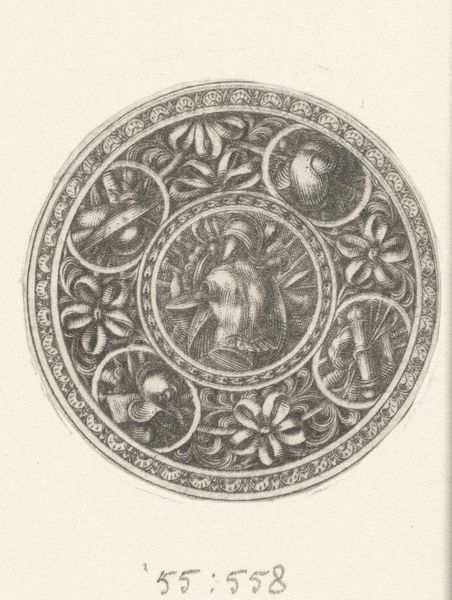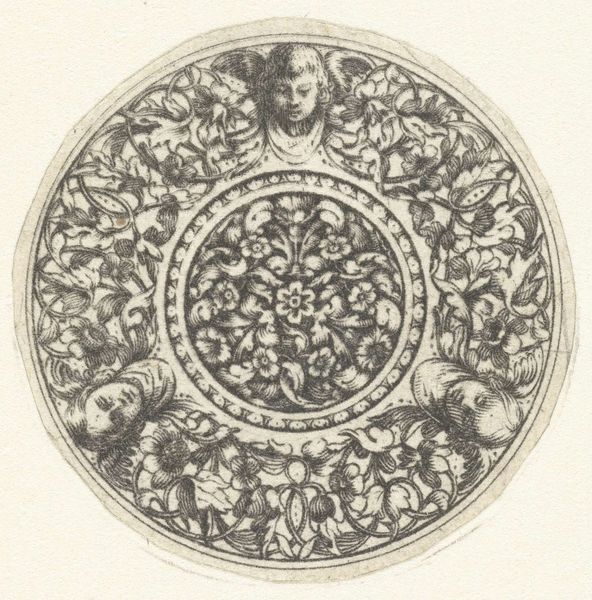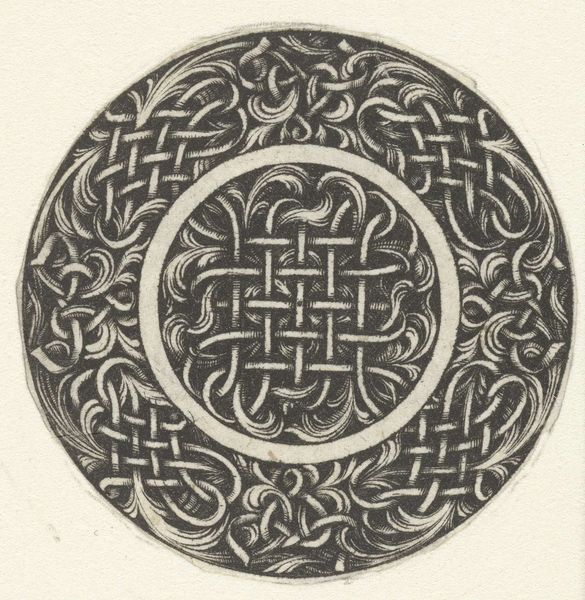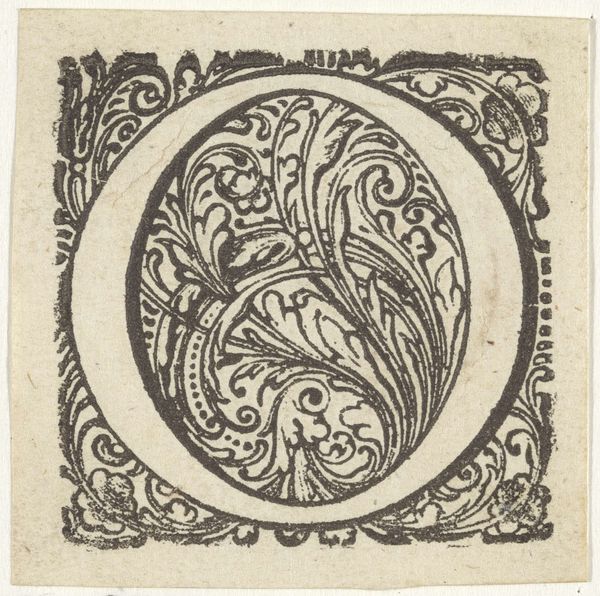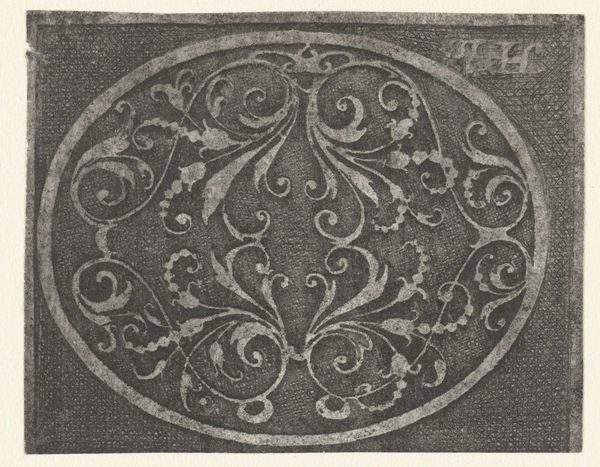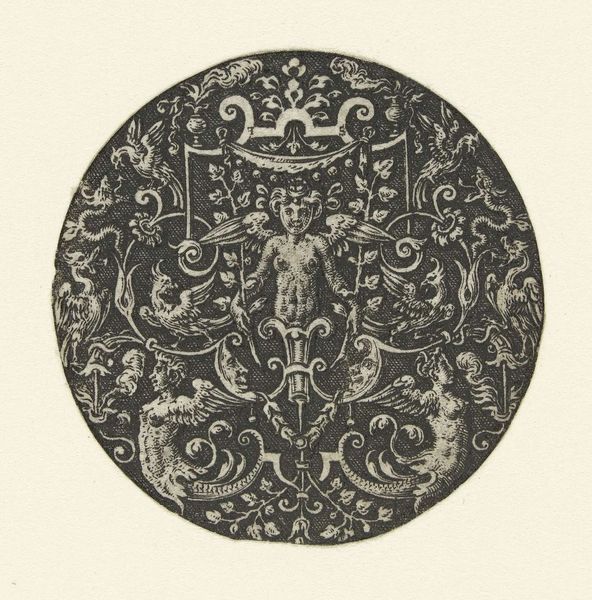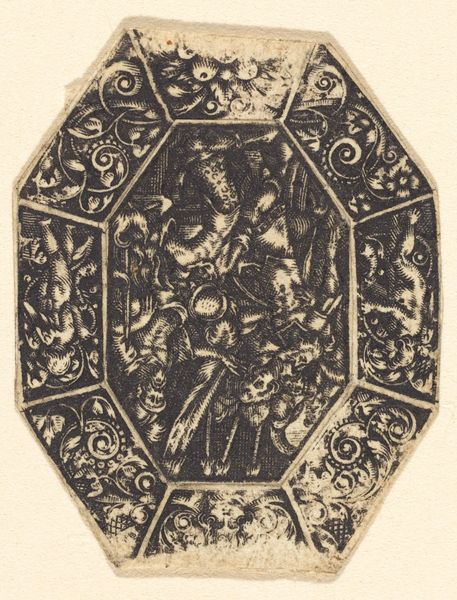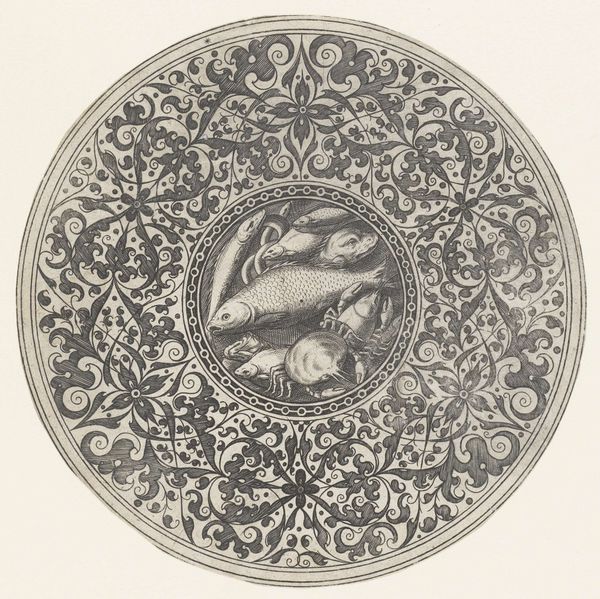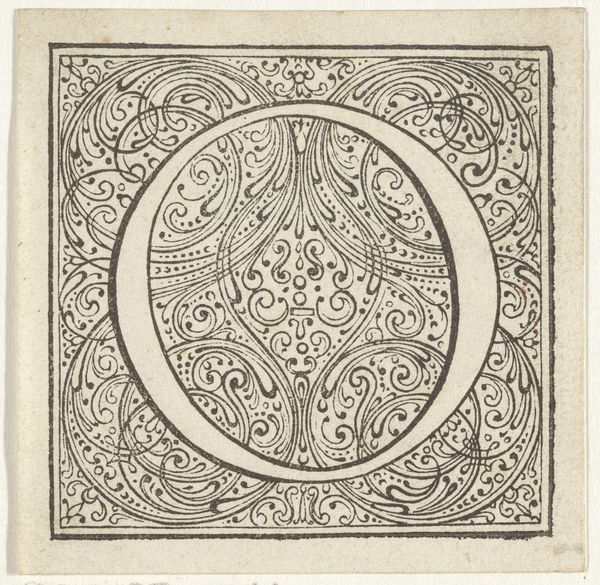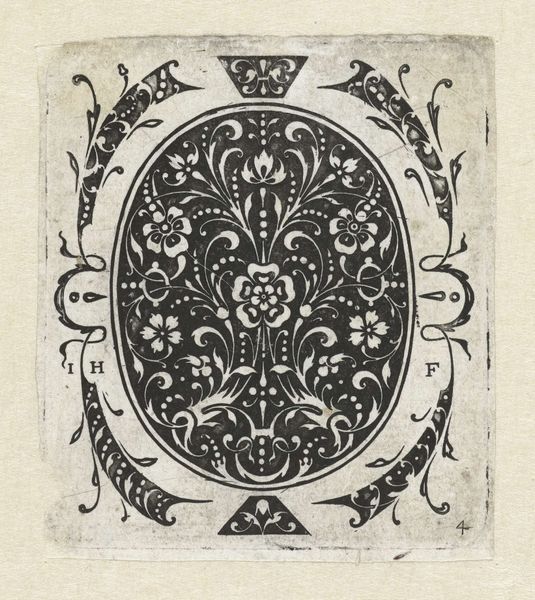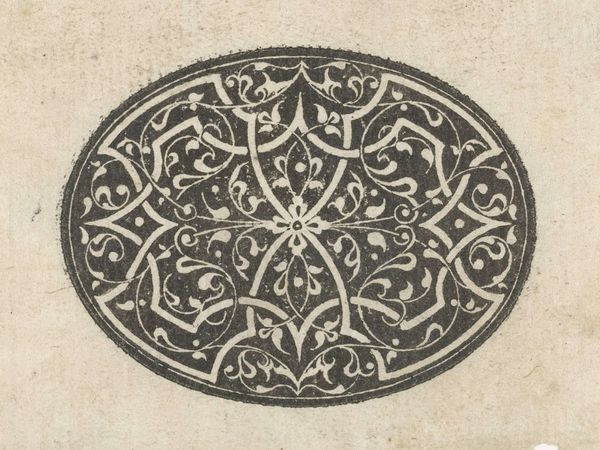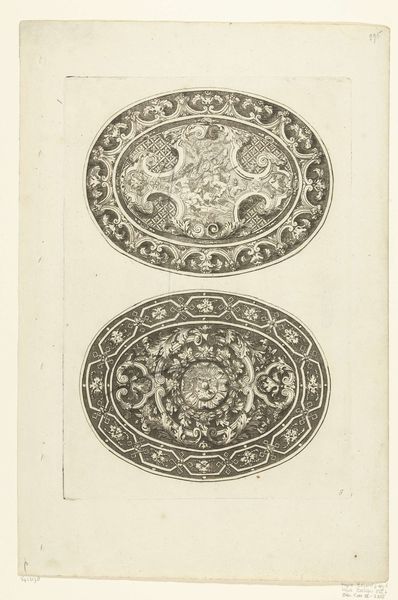
drawing, print, intaglio, ink, engraving
#
drawing
#
rippled sketch texture
#
baroque
#
pen drawing
# print
#
intaglio
#
old engraving style
#
ink line art
#
ink
#
pen-ink sketch
#
limited contrast and shading
#
pen work
#
decorative-art
#
coloring book page
#
engraving
#
doodle art
#
intricate and detailed
Copyright: Rijks Museum: Open Domain
Curator: At the Rijksmuseum, we have a drawing titled "Medaillon met vlechtwerk en bloemen," or Medallion with Wickerwork and Flowers, an intaglio print and ink drawing by Jacques Vauquer. It’s dated somewhere between 1631 and 1686. First impressions? Editor: It’s got a quaint, decorative vibe. Almost feels like a particularly ornate coloring book page. So intricate, all those interwoven lines and tiny, stylized flowers. Makes me think of old-world charm. Curator: Absolutely. Vauquer worked during the Baroque period, and this piece showcases the era’s love for ornate detail and decorative art. You see the circular medallion form itself is divided into two distinct zones: a central field with that knotwork, surrounded by a dense border of flowers and ribbons. Editor: That central design looks almost Celtic, doesn’t it? All intertwined and endlessly looping. But set against that meticulously rendered floral border... it speaks to this tension, this controlled wildness. Curator: Exactly! And think about what a medallion represents: importance, commemoration. Here, it’s as if Vauquer is elevating this delicate, ephemeral beauty—the flowers, the weaving—to something of lasting value. The very act of engraving gives it permanence. It is giving value to a pattern, which democratizes value and appreciation. Editor: I appreciate that so much of it is left to suggestion, not everything fully rendered. It’s a space of becoming, and what seems contained in its circular shape almost seems to resist it. Curator: Perhaps that tension you feel is echoed in our own perceptions of ornamentation. How we assign value or trivialize detail in the world around us. It makes me consider ideas about hierarchy in image-making, or even consider art versus craft. Editor: That's a thoughtful point. Something like this encourages a closer look, maybe challenges some of our own biases about what is valuable, what is elevated. It asks, "Isn't there beauty in the small details?". It's an invitation, a gift. Curator: Yes, and hopefully this glimpse into the artistic possibilities invites a little bit of pause, even wonder, at a work on paper created hundreds of years ago.
Comments
No comments
Be the first to comment and join the conversation on the ultimate creative platform.
